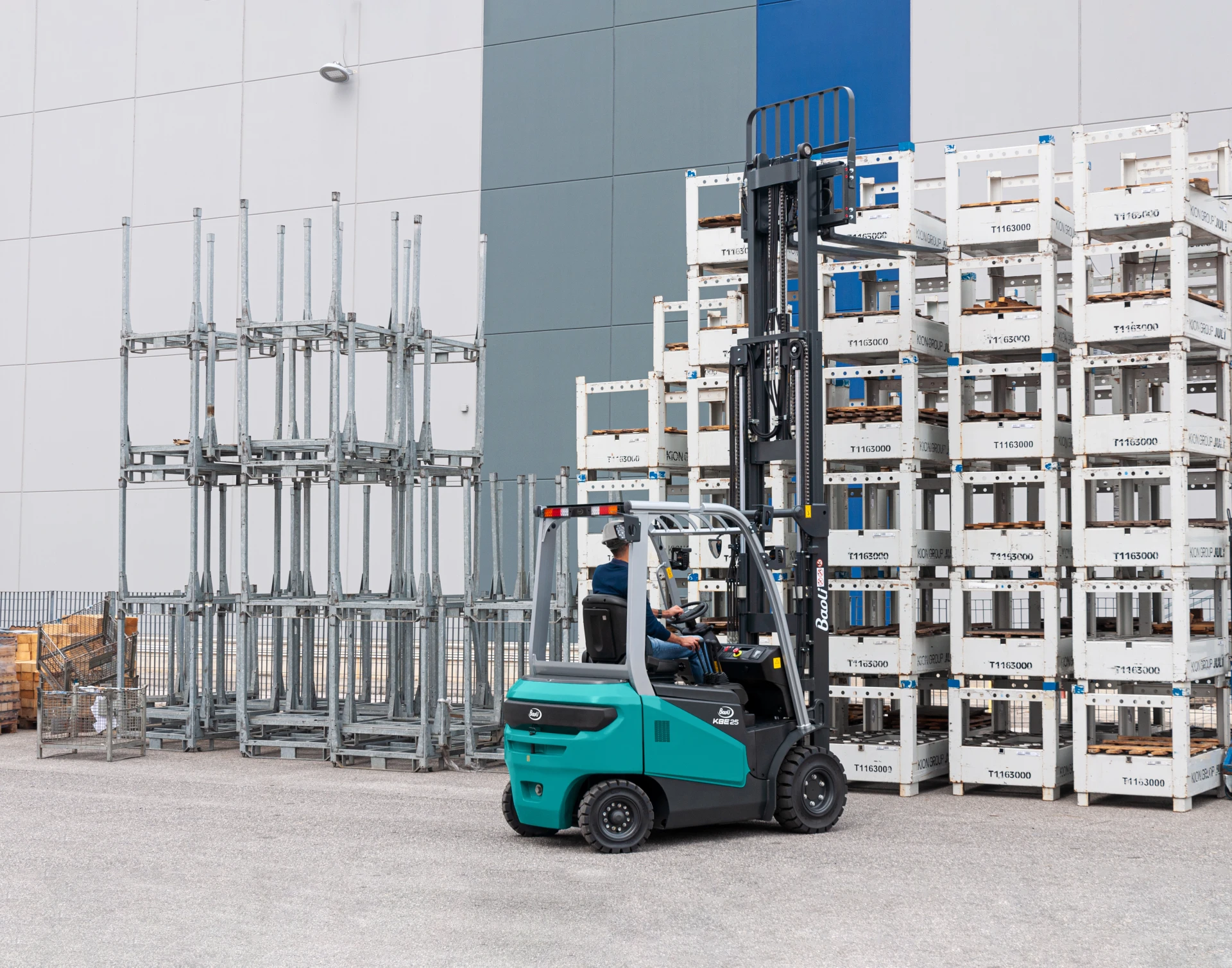
Electric forklifts
Electric forklifts are used in various industries for moving and handling pallet loads, particularly in areas where low emissions and quiet operation are required, especially in indoor applications where internal combustion engine trucks are prohibited. This makes an electric forklift a reliable and environmentally friendly solution for material handling. They can also work outdoors but require a hard, smooth floor surface. High versatility is a strength point; they are common in warehouses since they work efficiently in narrow aisles, tight spaces and cold store environments (temperatures below -25°C). Powered by an electric engine and battery, the electric forklift truck guarantees an efficient and cost-effective way to complete material handling tasks. Electric forklifts can be either three-wheeled or four-wheeled. Small forklifts with three wheels are more maneuverable and used in warehouses with narrow aisles. Four-wheel forklifts are more stable and can handle heavier loads. Different types of batteries can be used in electric forklifts, with their own characteristics. The most common types of batteries are lead-acid and lithium-ion batteries. Lead-acid batteries are the traditional and more affordable option. On the other hand, lithium-ion batteries are a more advanced option. They offer several advantages, including longer life, fast charge times, and maintenance-free operation.
FAQ
Electric forklifts are driven by electric engines powered by batteries. When the operator starts the truck, the electric motor converts the stored electrical energy into mechanical energy that drives the wheels and hydraulic system. The steering system is also powered by electricity.
The main difference between an electric forklift and an IC (internal combustion) forklift is the power source. Electric forklifts are powered by rechargeable batteries. In contrast, an IC forklift uses a combustion engine powered by petrol, diesel, or gas.
The difference between them has several implications in terms of emissions, noise, maintenance, cost and performance. The main drawback of the electric forklift relies on the downtime due to battery charging, while the internal combustion engine forklift only needs to be refilled. The choice depends on these factors.
Electric forklifts are powered by rechargeable batteries. Full battery charge typically provides enough power for a working shift. An additional battery is required for 24-hour operation. The life of batteries depends on various factors such as application, maintenance, charging methods, and battery quality. On average, electric forklift batteries can last anywhere from 5 to 7 years.
Different types of batteries can be used in electric forklifts, with their own characteristics. The most common types of batteries are lead-acid and lithium-ion batteries. The first ones have longer charging time and they require a dedicated charging area. On the contrary, partial charging should be applied on Li-ion batteries. The choice of battery type for an electric forklift depends on various factors such as the specific application, budget, and desired performance.
To charge an electric forklift, it is first required to park the truck in a dedicated charging area. After a first check of the devices, the connection to the electric grid is needed. To correctly set the charging parameters, it is needed to always follow the manufacturer’s instructions. The charging should be stopped once the operation is completed, or the desired level of energy is reached. Then, disconnect the equipment.



